Table of Contents[Hide][Show]
While living a healthy lifestyle definitely contributes to a radiant complexion (think a balanced diet, exercise, plenty of water, and seven to eight hours of quality shuteye on the daily), it’s also important that you make an effort to put some time into your nighttime beauty routine.
As with most things in life, you’re only going to get out what you put into it, so if you’re one of those individuals whose regime consists of removing your makeup with the wipes you keep in your nightstand drawer, read on.
Night skin care routine basics
But even if you’re a product junkie, chances are there are a few ways you can up the ante in terms of your daily PM groove so you wake up with glowing skin—proof lies ahead.
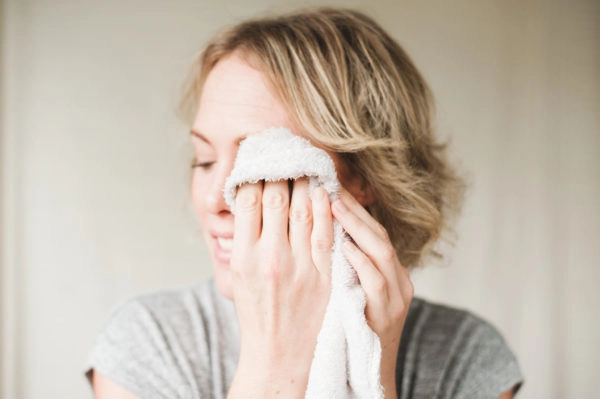
1. Cleanse
If you do anything at all before going to bed, it absolutely should be removing your makeup—even if you don’t wear any because your skin is still subjected to dirt, sweat, and pollution throughout the day. In fact, outdoor impurities have been linked to skin sensitivity, premature aging, dullness, roughness, dryness, and an uneven complexion.
Effective cleansing
You also want to make sure you’re cleansing effectively. Studies revealed that up to 80 percent of Americans are washing their faces incorrectly, many of whom are using bath wash, hand soap, or only water.
Choose a proper cleanser for your skin type (think a gel-based cleanser if you’re oily, a cream or oil-based formula if you’re dry and/or sensitive) that’s formulated with natural (void of artificial colors, chemicals, and fillers) ingredients.
Keep it natural
All of the products in your skin care regimen should be naturally derived (and organic when possible) as they have a calming effect, replenish moisture, are skin loving, and rich in antioxidants and naturally occurring vitamins. Remember the skin—the largest organ of the body—acts as a sponge, so it’s going to react to anything you put on it, for better or for worse.
2. Exfoliate
You’re not going to want to exfoliate your skin every day, but it’s important to remove any dead skin cells so that your products are effectively penetrating your skin. Overly dry or sensitive skin types are going to want to exfoliate less than someone with normal to oily skin.
Over-exfoliation in general can cause inflammation and irritation which can expedite aging. A good rule of thumb is one to three times a week tops. Choose a gentle—non abrasive—formula to prevent micro tears in the skin.
3. Mask
Many people opt to skip out on using a mask because “it takes too much time,” but the truth of the matter is, everyone has a spare ten to twenty minutes over the course of seven days. I always told my clients to choose the most relaxed day in their week and keep in mind that masking can be combined with other activities such as reading, watching a television program, etc.
There are also so many delivery systems available these days (think sheet and bubble masks), making it easier than ever to give your skin an extra boost.
Choosing your mask
If you choose a traditional wet mask, oilier complexions respond well to clay-based varieties—just don’t let it completely dry as the skin can become sensitized during the removal process. Those with dry or sensitive skin should opt for a cream or gel-based formula.
Overnight masks
If you still find it difficult to incorporate a mask into your regimen, swap out your nighttime moisturizer with a sleeping mask. These overnight “packs” are comprised of different ingredients depending on specific skin concerns, but all of the formulas are designed to hydrate the skin.
You need not worry about getting the product on your pillowcase because sleep masks are typically less rich than night creams and and absorb quickly into the skin.
4. Tone
Unlike some of the more astringent toners of yesteryear, the role of a natural toner is to balance the skin after the cleansing process while prepping it for the remaining steps in your regimen.
Opt for a formula with essential oils as they have the power to balance the skin, create a calming sensation, minimize the appearance of large pores, replenish moisture, and bring radiance to your look.
5. Treat
Before moisturizing, you’re going to want to apply a serum—a concentrated cocktail of ingredients designed to target specific skin concerns—and an eye cream/serum/gel to address puffiness and fine lines while rejuvenating tired eyes.
6. Moisturize
Beauty sleep is real and your skin and your skin actually is more apt to absorb topical treatments starting with the time when you start to feel sleepy and throughout the sleep phase—this is why it’s so important to get seven to eight hours of shuteye each night.
Since the skin’s ability to repair itself occurs at this time, you’re going to want to take advantage of it by applying a nourishing night cream comprised of concentrated (and often, stronger) ingredients to bring radiance to your look, defy your age, enrich the skin with a moisturizing barrier, rejuvenate, and renew the look of beautiful skin.
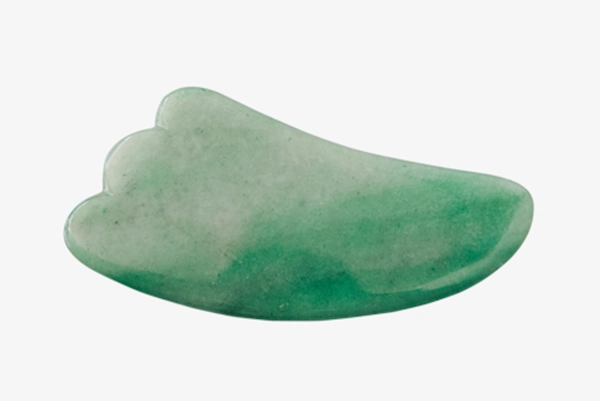
Bring the spa into your home
There’s nothing more relaxing than a trip to the spa, but that doesn’t mean you can’t bring some of the same modalities into your own abode. Why not try:
Gua sha
This ancient treatment involves taking a jade or rose quartz crystal tool to perform specific facial movements in an effort to tighten and firm your look, temporarily relieve puffiness, minimize the appearance of fine lines and wrinkles, brighten and lighten your look, and lessen/reduce the appearance of dark circles under the eyes. Here’s how to do it.
Jade roller
Like gua sha, jade rolling encourages revitalized skin, gives your eyes a youthful glow, and brings radiance to your look but via a roller—much like a mini-paint roller—made from jade.
In terms of choosing between the two, it’s really a matter of preference in terms of which tool you’re more comfortable with using.
Herbal steam bath
Steaming your face helps with deep pore congestion, gives your face a glowing look, and replenishes moisture. It’s also a great treatment to relax the mind. All you need to do is boil two quarts of water and add a handful of dried herbs and/or a few drops of essential oils.
Place the pot on a stead surface and hover your face over it while covering your head with a large bath towel—the idea is to capture the steam. Take deep breaths and relax for about ten minutes.
Tea bag eye compresses
Tea bags are in inexpensive way to treat eye concerns such as inflammation, dark circles, and puffiness.
Simply steep two tea bags as you normally would, remove the bags and place them in the refrigerator for about 10 to 20 minutes before laying down and applying them to your eyes for 20 to 30 minutes—this would be a good time to apply a mask, too!
The mental health/skin connection
It can be easy to take the stress of the day to bed with you, but there’s a link between skin disorders and stress, so it’s important to take address your mental health as much as you would your skin care routine.
Research suggests many skin problems clear up without the use of medical treatment once emotional issues are addressed because the brain and the nervous system regulate the skin’s immune cells. When disrupted, this can affect the skin’s ability to heal.
Getting a deep sleep
Getting ample beauty sleep after your nighttime regimen is the secret to success, so turn your bedroom into a place of peace. For example, a quiet, dark, and cool (between 60 and 67 degrees Fahrenheit) environment is the best for sleeping.
If you live in a noisy environment (or are a light sleeper), invest in a pair of earplugs or get a white noise machine that pumps out ambient sounds such as crashing beach waves. Blackout shades, heavy curtains, or an eye mask can help block out light while making it easier for the brain to accept it’s time to sleep.
Try to keep all electronics and work-related materials (and clutter in general) out of your space so that you can strengthen the mental connection with your bedroom and sleeping.
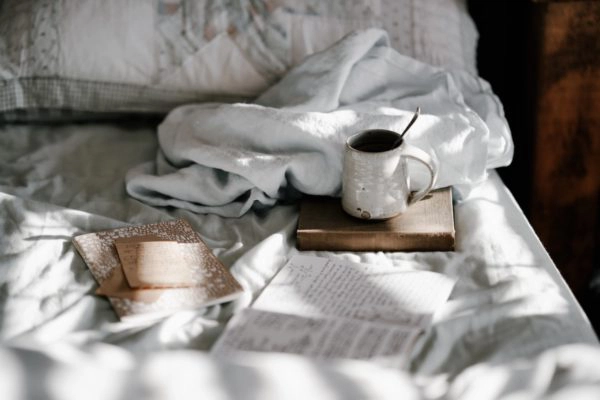
Establish a pre-sleep ritual
A pre-sleep ritual can make it easier to put attention to your skin care routine and self-care because you’re concentrating on yourself. Some examples of ways to decompress include: turning off all electronic devices (the television, too) at least one hour before bedtime, reading, meditation or breathing exercises, listening to soothing music, light stretching, writing down a to-do list for the next day, having a soothing cup of herbal tea or light snack (think low-fat milk or cheese, one egg prepared to liking, air-popped popcorn, two tablespoons of nuts), or taking a warm shower or bath.
Keeping your night skin care routine
Remember the key to any nighttime beauty regimen is planning. Make sure your go-to products are within reach, not buried in a cabinet or drawer somewhere. Keep your bedroom in order, set nighttime items out as a reminder, and schedule in time for those extras like applying a mask or experimenting with a gua sha tool—anything to eliminate excuses.
Once you get into a regular groove, it will be easier to maintain a routine as the results will speak for themselves.
Do you keep a nighttime skin routine? Share with us in the comments.
Sources
“The Impact of Pollution on the Skin,” MD Magazine, January, 2018, https://www.mdmag.com/medical-news/the-impact-of-pollution-on-the-skin
“National Study Reveals Up to 80 Percent of Americans Wash Their Face Incorrectly,” MarketsInsider, August 2017, https://markets.businessinsider.com/news/stocks/national-study-reveals-up-to-80-percent-of-americans-wash-their-face-incorrectly-1002222280
“Recognizing the Mind-Skin Connection,” Harvard Health Publishing, November, 2006, https://www.health.harvard.edu/newsletter_article/Recognizing_the_mind-skin_connection
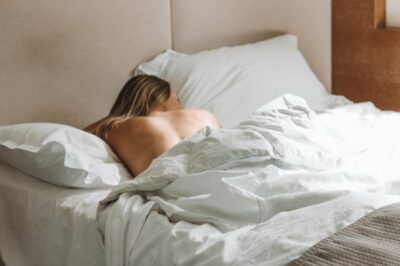

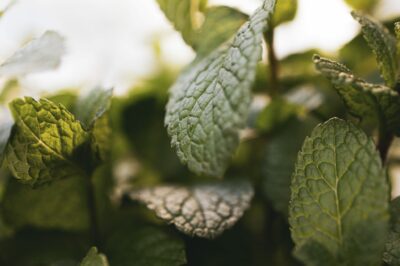

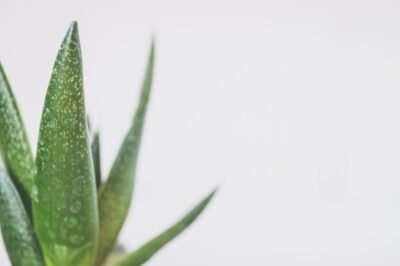

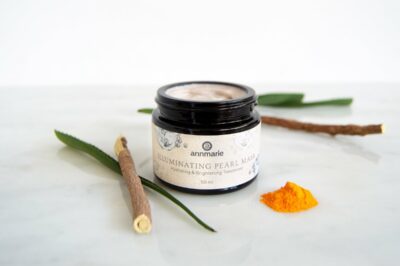
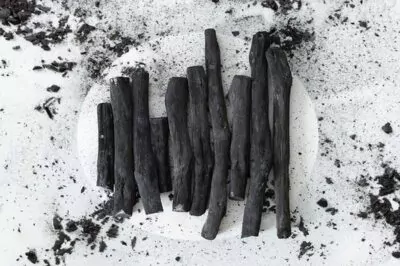
How do you keep deep moisturizer out of your hair and a minimum on the pillow case when sleeping?